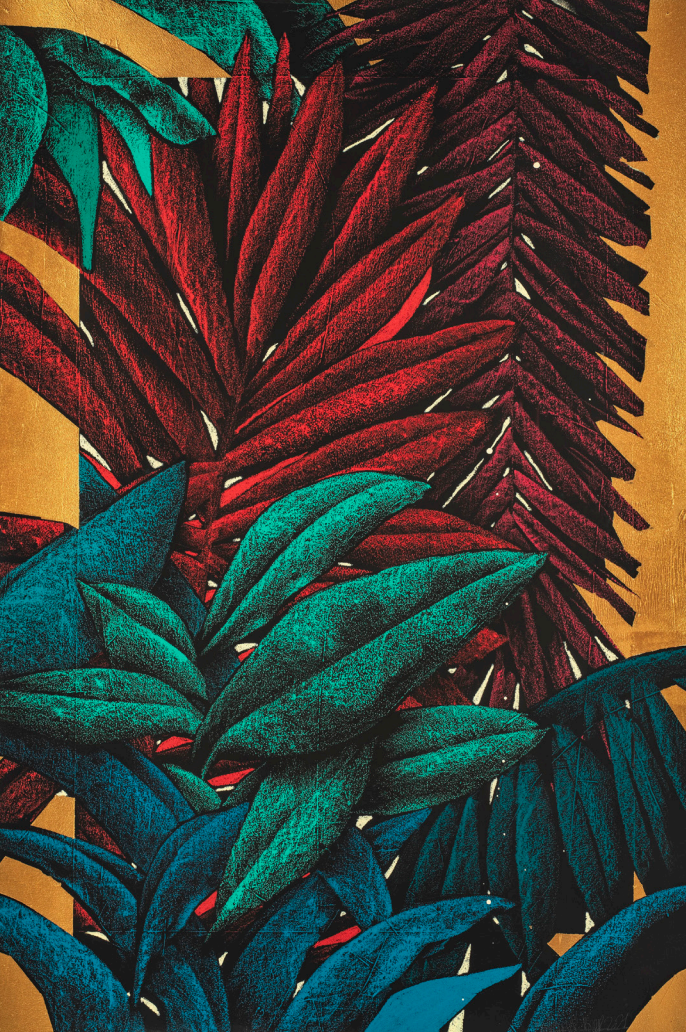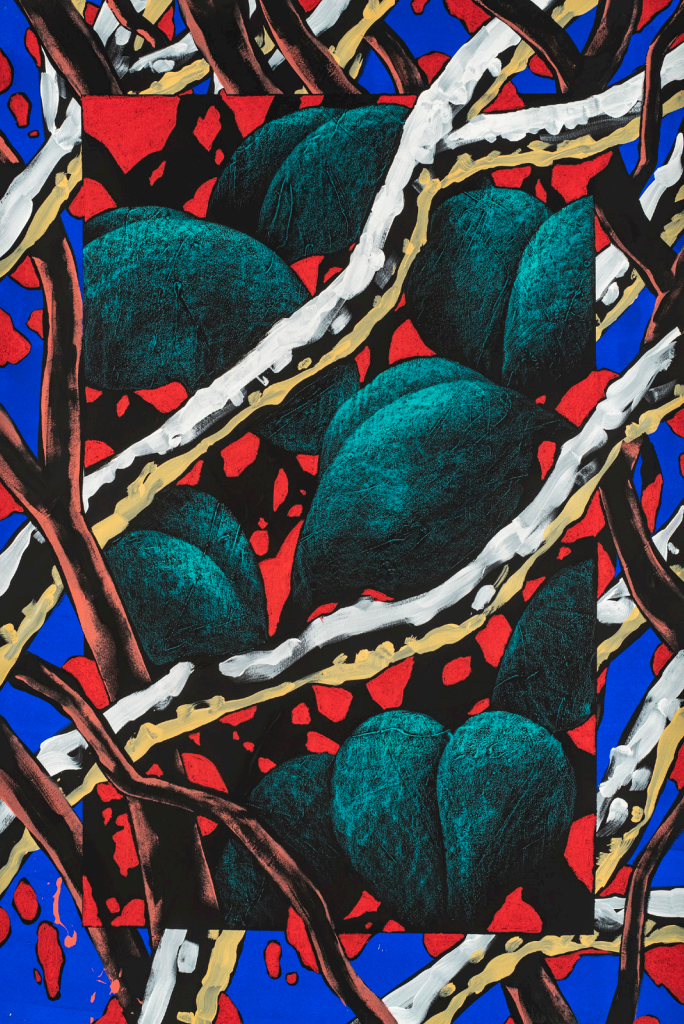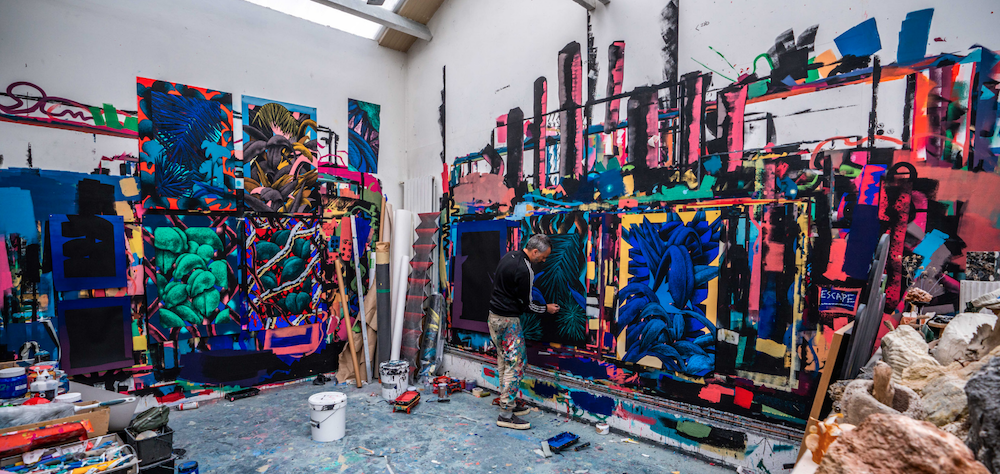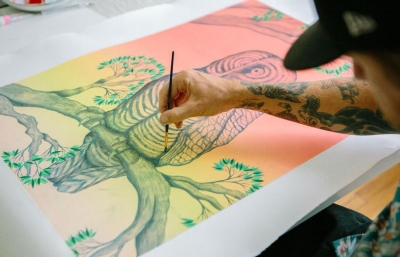Julien Colombier’s new works are the next step in an innate path that he has been following for several years. His motifs, both vegetal and mineral, have been colonising an ever-growing array of spaces, whether in the form of murals or drawings mounted on canvas. The plants grow like a jungle, a rainforest with a hot and humid climate favouring inexorable growth and extinguishing any attempt at domestication.
This is how I have always regarded Colombier’s works— as fragments of uncontrollable freedom. Admittedly, at first glance, they are contained, framed by the edges of the painting, which is more than ever “an open window on the world”. But it is not hard to imagine the plants spreading beyond them. There is also the question of the depth of his work. Palm fronds, leaves, and foliage obstruct the field of view. They are, in a way, the tree that hides the forest.
Trunks and leaves accumulate and overlap endlessly. They manage to fill the space completely in a manner that brings to mind the modernism of Clement Greenberg. These new paintings, by stacking layer upon layer and drawing inspiration from the wall that still bears the remnants of previously painted works, assume a “painting within the painting” strategy and accentuate the saturation effect. The multitude is disorienting; such that we lose all our points of reference. Swept up in the avalanche of images, we can no longer tell up from down. Are we looking at the lower branches or the canopy? Is that a glimpse of the sky behind the foliage or is it the forest floor? The forces of gravity are upended. Stones float in mid-air like the rocks on James Cameron’s distant planet Pandora in Avatar. Colombier’s works are a portal to another world. A long-lost ancient world. —Richard Leydier
ESCAPE will be on view at Le Feuvre & Roze in Paris from May 22, 2021












